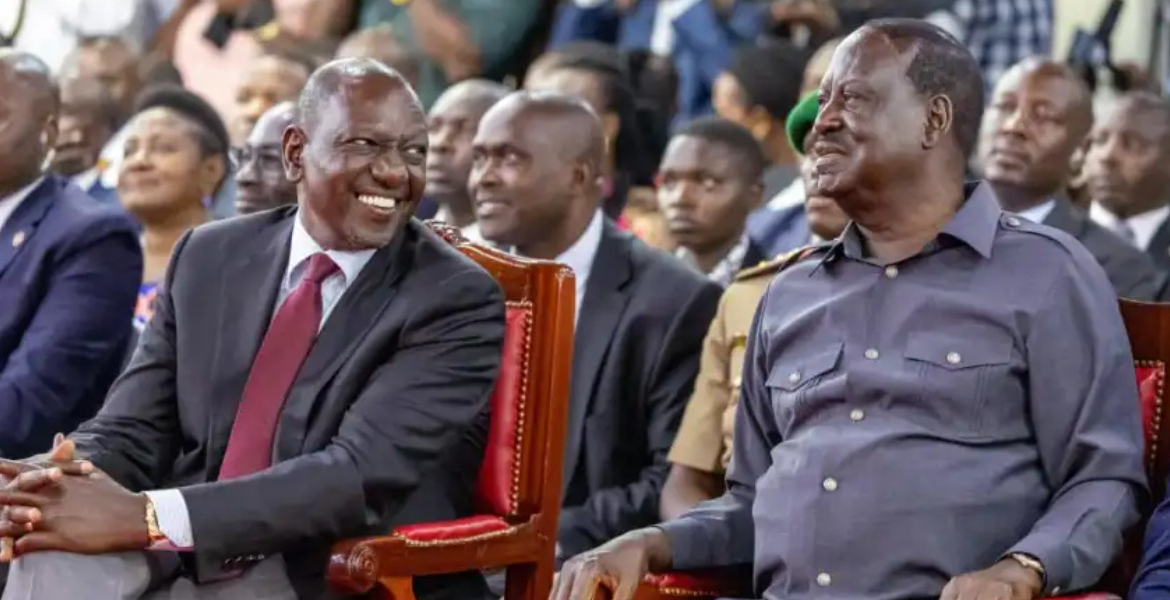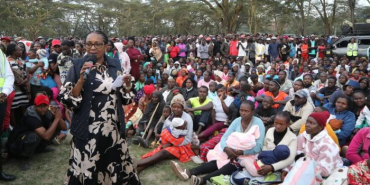Ruto-Odinga Alliance Divides ODM Ahead of 2027 Polls

Kenya's Orange Democratic Movement (ODM) is currently navigating significant internal discord that threatens to undermine its ideological coherence and electoral prospects as the 2027 general elections approach.
Once a cohesive force under the leadership of former Prime Minister Raila Odinga, the party now finds itself segmented into competing factions, driven by ideological differences and shifting allegiances stemming from its complex relationship with President William Ruto's Kenya Kwanza Alliance. Insiders suggest that this internal fracturing transcends individual rivalries or political posturing, reflecting deeper tensions regarding the party's philosophical foundation and future trajectory. The ODM has evolved into a movement loosely bound by historical legacy rather than a unified vision.
At the heart of this turbulence is the controversial collaboration between Odinga and President Ruto, which has precipitated the division of ODM into at least four distinct factions, each interpreting the party's legacy differently and advocating divergent strategies for navigating Kenya's volatile political terrain. One faction, considered the party's ideological core, comprises younger, reform-oriented leaders who are highly critical of the government. Spearheaded by Secretary-General Edwin Sifuna, alongside Siaya Governor James Orengo, Vihiga Senator Godfrey Osotsi, and Homa Bay Senator Moses Kajwang', this group argues that ODM must uphold its credentials as a people-centred opposition force.
Their rhetoric, grounded in accountability and political idealism, positions them as staunch defenders against the perceived dilution of party principles under the Ruto-Odinga detente. Sifuna, often the most outspoken among them, has asserted that ODM's engagement with the Kenya Kwanza regime does not equate to endorsement of its leadership or policies. In public statements, he has ruled out supporting President Ruto's re-election bid, saying that ODM would prefer to align with formations that champion progressive, pro-people values.
"William Ruto will lose that election even with Raila's support," he said on national television.
Conversely, a second faction within ODM has more openly embraced rapprochement with the president, aligning themselves politically and ideologically with the ruling coalition. This group includes prominent figures such as Suna East MP Junet Mohamed, Homa Bay Governor Gladys Wanga, and former party officials now serving in government roles, including Treasury Cabinet Secretary John Mbadi and Mining Cabinet Secretary Hassan Joho. These leaders have shown explicit and sometimes emphatic support for President Ruto and the broader Kenya Kwanza platform, at times surpassing even UDA loyalists in their enthusiasm.
This stance has sparked unease among the party's traditional supporters, leading to public confrontations. In February, for instance, Makadara MP George Aladwa launched a scathing attack on Sifuna, accusing him of sabotaging potential agreements between ODM and UDA and challenging Odinga's authority. The escalating rhetoric fueled speculation of an imminent internal purge, although Odinga later intervened to reaffirm Sifuna's role as the official voice of the party, aiming to quell the tensions, at least temporarily.
However, such pronouncements have done little to bridge the growing divisions. A third group, comprising moderate voices such as Governors Abdulswamad Nassir of Mombasa, Anyang' Nyong'o of Kisumu, and Simba Arati of Kisii, maintains a more cautious stance. These leaders have neither explicitly endorsed the Kenya Kwanza partnership nor opposed it, opting for a wait-and-see approach that reflects both prudence and political calculation. While their silence has offered a facade of unity, it has also raised questions about whether neutrality is a sustainable position in a polarised environment.
Further complicating the situation is a fourth, more rebellious faction based in the Gusii region and oriented around potential presidential aspirant Fred Matiang'i. Leaders such as Kisii Senator Richard Onyonka and MPs Antony Kibagendi and Caleb Amisi have voiced disillusionment with Odinga and scepticism of the government. They contend that ODM has marginalised certain constituencies and violated internal equity in the distribution of influence and resources. Their stance is not only anti-government but increasingly anti-Odinga, distinguishing them as a potentially breakaway movement.
While the proliferation of factions may suggest a party in decline, some political observers believe these divisions could offer valuable insights for Odinga as he evaluates his legacy and potential succession. Professor David Monda, a political analyst and lecturer based in the United States, describes the internal battles as a conflict between idealists, uncomfortable with realpolitik, and pragmatists seeking political capital in Kenya's competitive political arena. According to Professor Monda, this tension reflects broader currents in the national political discourse and could be decisive in shaping the future direction of ODM.
This fracturing presents both challenges and opportunities. On one hand, ODM's internal discord diminishes its ability to present a united electoral front or effectively scrutinise the executive. On the other, it provides a litmus test of loyalty and ideological commitment within the party, revealing those who remain committed to its founding principles and those who prioritise political expediency.
Odinga, who has led the party since its inception in 2005, remains a significant figure within ODM.
As succession debates intensify and the 2027 elections draw nearer, the critical question may no longer be whether ODM can remain united, but whether it can evolve without completely disintegrating.








Add new comment